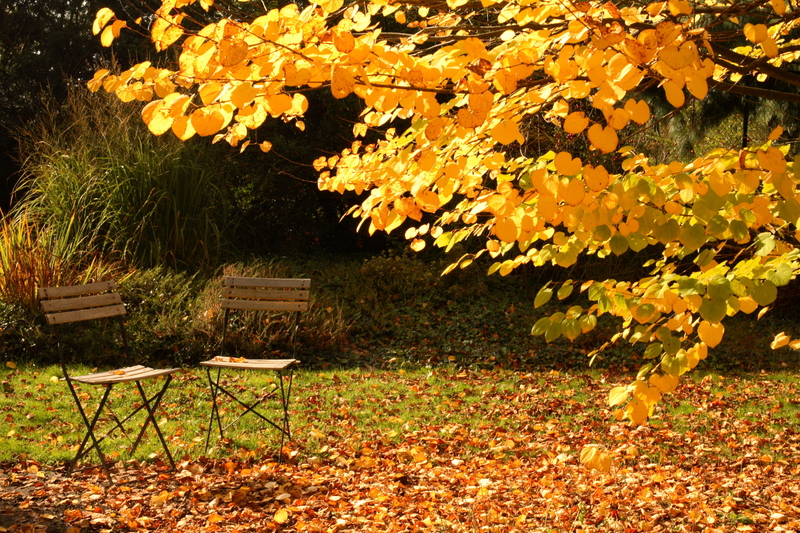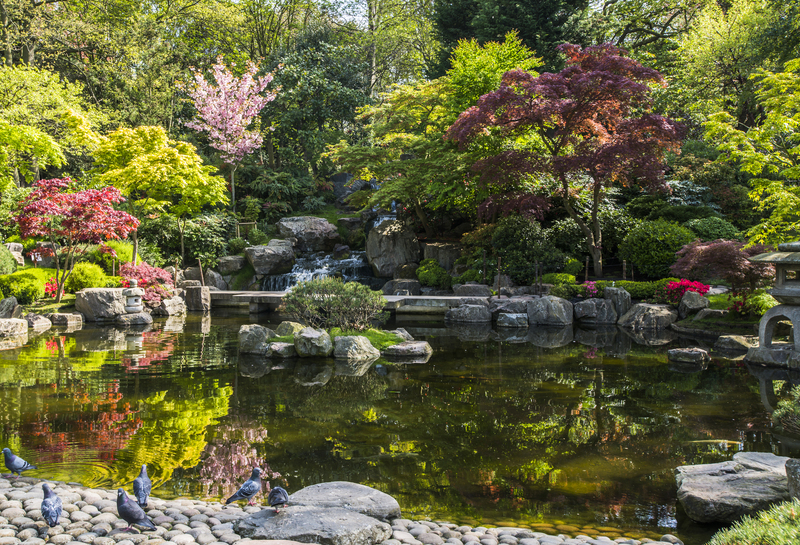Garden Harmony Through Creative Hedge Trimming Techniques
Posted on 30/09/2025
Garden Harmony Through Creative Hedge Trimming Techniques
The art of garden design is more than planting flowers and watering shrubs—it's about creating a living space where every element blends harmoniously. One of the most transformative ways to achieve garden harmony is through creative hedge trimming techniques. Expertly pruned hedges not only define boundaries but also add structure, beauty, and personality to any outdoor space. Whether you're an avid gardener or a landscaping novice, mastering diverse hedge trimming methods can elevate your garden from ordinary to extraordinary.

Understanding the Importance of Hedges in Garden Design
Hedges play a pivotal role in establishing garden balance and unity. They separate garden areas, provide privacy, act as windbreaks, and serve as a backdrop that showcases annuals and perennials. Their function, however, mainly depends on how they are maintained and shaped. Trimming techniques not only keep plants healthy but also bring out the aesthetic potential of your green space.
- Defining Pathways
- Creating Living Walls
- Highlighting Garden Features
- Providing Shelter for Wildlife
*Garden harmony through hedge trimming blends plants with pathways and patios, ensuring natural flow and visual rhythm throughout your landscape.*
Creative Hedge Trimming Techniques
For a truly harmonious garden, various trimming styles can be creatively applied. Here are the most effective and inspiring hedge trimming techniques:
1. Formal Hedge Trimming for Elegance and Precision
This classic technique involves cutting hedges into straight lines and crisp angles, creating a sense of order and symmetry. Use a string line or stakes as guidance when trimming for uniform height and width.
- Best Plants: Boxwood, Yew, Privet, Holly
- Tips: Prune at least twice a year, and use sharp shears for clean lines.
Formal hedges are perfect for traditional gardens or as borders along walkways. The clean look offers a strong visual anchor, promoting a feeling of calm and tranquility—the foundation of garden harmony.
2. Informal Hedge Trimming for a Natural Flow
Unlike their formal counterparts, informal hedges are trimmed to follow the plant's natural shape. This results in gentle curves and organic outlines that blend seamlessly into the landscape.
- Best Plants: Lilac, Forsythia, Spirea, Photinia
- Tips: Trim lightly, allowing plants to bloom and fruit naturally.
Informal trimming encourages wildlife, such as birds and pollinators, and supports the ecosystem. It's a technique that exemplifies garden balance and complements cottage or wild gardens.
3. Topiary: Artistic Hedge Shaping
Topiary is the practice of sculpting hedges into decorative shapes and figures. From simple globes and cones to spirals and animal forms, topiary injects whimsy and character into any garden.
- Best Plants: Boxwood, Euonymus, Yew
- Tips: Begin with simple shapes; use wire frames as guides for complex designs.
*Creative hedge trimming* through topiary can highlight focal points or add surprise elements that break monotony, ensuring a dynamic and harmonious outdoor space.
4. Layered Hedges for Depth and Texture
Layering involves planting and sculpting hedges of varying heights and textures in succession. This multi-tiered approach provides visual depth, privacy, and a naturalistic look.
- Best Plants: Privet, Hornbeam, Laurel, Boxwood
- Tips: Plant taller hedges at the back, grading down to shorter, finer-leafed ones.
Layered hedges encourage biological diversity, as varied shrubs attract different insects and birds, improving garden health and harmony.
5. Hedge Mosaics and Color Contrasts
Take creativity up a notch with hedge mosaics. By trimming and intertwining different shrub species, you can create patterns or color blocks within a single hedge row.
- Best Plants: Photinia (red flush), Golden Euonymus, Variegated Holly
- Tips: Select evergreens and deciduous varieties for year-round color variation.
This technique brings living art to the landscape, establishing eye-catching rhythms and accents that fortify overall garden unity.
Balancing Garden Elements Through Hedge Trimming
Achieving harmony is about more than aesthetics. Thoughtful hedge trimming also ensures:
- Plant Health: Removing diseased or dead wood encourages healthy growth.
- Light Management: Pruning allows sunlight to reach inner branches, fostering lush foliage.
- Air Circulation: Reduces the risk of fungal diseases by improving airflow.
- Functional Design: Properly trimmed hedges can direct movement and define spaces.
*By integrating creative hedge pruning techniques, gardeners don't just sculpt shapes—they cultivate a sense of garden cohesion, vitality, and long-term beauty.*
Essential Tools for Creative Hedge Trimming
Having the right equipment is critical for both safety and success. Here is a checklist of must-have tools for creative hedge trimming:
- Hedge Shears: For detailed and precise hand trimming.
- Electric Or Battery-Powered Trimmers: Ideal for large or tall hedges.
- Pruning Saws: For removing thick branches.
- Safety Gear: Gloves, protective eyewear, and sturdy footwear.
- Ladders or Platforms: For safely reaching higher areas.
- Measuring Tape / String Line: Ensures evenness especially for formal designs.
Maintenance Tips
- Always sharpen blades before use for the cleanest cuts.
- Disinfect equipment between plants to avoid disease spread.
- Store tools in a dry place to prevent rust and damage.
Best Times for Hedge Trimming
Timing is crucial for optimal results and plant health. Here are some guidelines:
- Evergreen Hedges: Trim in late spring or early summer, avoiding frost-prone periods.
- Deciduous Hedges: Prune in late winter or early spring before new growth begins.
- Flowering Hedges: Wait until after the flowers fade, unless you wish to reduce bloom the following year.

Step-by-Step Guide: How to Trim Hedges for Ultimate Garden Harmony
- Assess the Hedge: Identify the species, growth habit, and desired shape.
- Prepare Tools: Sanitize blades, check for sharpness, and gather protective gear.
- Mark Outlines: Use stakes, string, or templates for accuracy, especially in formal or topiary designs.
- Begin Trimming: Work from bottom to top and from the inside out to achieve an even cut.
- Step Back Regularly: Observe progress and make adjustments for symmetry and flow.
- Clean Up: Remove trimmings and inspect for missed branches.
- Mulch and Water: Help your hedge recover with watering and an organic mulch layer.
Enhancing Garden Harmony With Complementary Elements
While creative hedge trimming is foundational, true garden harmony emerges when hedges interact thoughtfully with:
- Pathways: Curved or straight lines that guide visitors through manicured spaces.
- Flower Beds: Contrasting textures and colors can make hedges pop.
- Water Features: Hedges reflect gracefully in ponds or frame fountains.
- Garden Sculptures: Topiary and pruned edges accentuate art and statuary.
*The interplay between living and non-living features enhances unity, making your trimmed hedges not just boundaries or screens but key participants in the garden's symphony of design.*
Ecological Benefits of Thoughtful Hedge Maintenance
Beyond beauty and structure, hedge trimming techniques foster biodiversity:
- Wildlife Habitat: Dense, healthy hedges provide nesting sites and food sources for birds, insects, and small mammals.
- Pollinator Support: Flowering hedges attract bees, butterflies, and beneficial insects.
- Microclimate Management: Thick hedges moderate temperature, trap dust, and reduce noise.
By embracing a gentle, creative approach, hedge trimming can support ecological health, encouraging garden harmony not just visually, but environmentally too.
Common Mistakes to Avoid in Hedge Trimming
To preserve garden unity and promote plant longevity, steer clear of these typical errors:
- Over-pruning: Excessive cutting weakens the plant and leads to sparse regrowth.
- Irregular Schedules: Too infrequent or out-of-season pruning affects plant health.
- Wrong Tools: Using dull or inappropriate tools tears branches and allows diseases to spread.
- Poor Shaping: Cutting a hedge too wide at the top creates shade below, causing bare patches.
- Ignoring Safety: Not wearing eye or hand protection can result in injury.
Correct technique and timing are essential for maximizing the beauty and benefits of your hedge, leading to sustained garden harmony.

Creative Hedge Trimming Techniques: Inspiration from Around the World
For enthusiasts eager to take garden design to the next level, inspiration abounds. Consider French parterre gardens with their tightly clipped geometric hedges, the wild, flowering English hedgerows, or the whimsical Japanese cloud pruning (Niwaki) style.
- French Formal Gardens: Intricate knotwork and curbs defined by razor-straight boxwood hedges.
- English Country Hedges: Layered, informal, and florally diverse, a paradise for wildlife.
- Eastern Approaches: Organic, symbolic shapes sculpted to evoke movement and tranquility.
*Each tradition offers fresh ideas for combining creative trimming techniques that nurture unity, grace, and lasting appeal in your own landscape.*
Conclusion: Achieving Garden Harmony with Creative Hedge Trimming
In summary, garden harmony through creative hedge trimming techniques is both an art and a science. It demands thoughtful planning, inspired vision, and a steady hand. By choosing the right plants, tools, and trimming methods, you can create outlines that soothe the senses, encourage wildlife, and express your personality.
Whether you favor structured lines, free-form shapes, or artistic topiary, the power of hedge pruning to foster landscape unity is unparalleled. Let your garden grow gracefully—and let your creativity blossom—one snip at a time!
- Enhance beauty and privacy with sculpted hedges
- Promote plant health through proper timing and technique
- Support garden biodiversity by choosing diverse shrubs
- Create a personalized sanctuary of tranquility
Take pride in your green artistry and watch how garden harmony through creative hedge trimming transforms your outdoor world!

